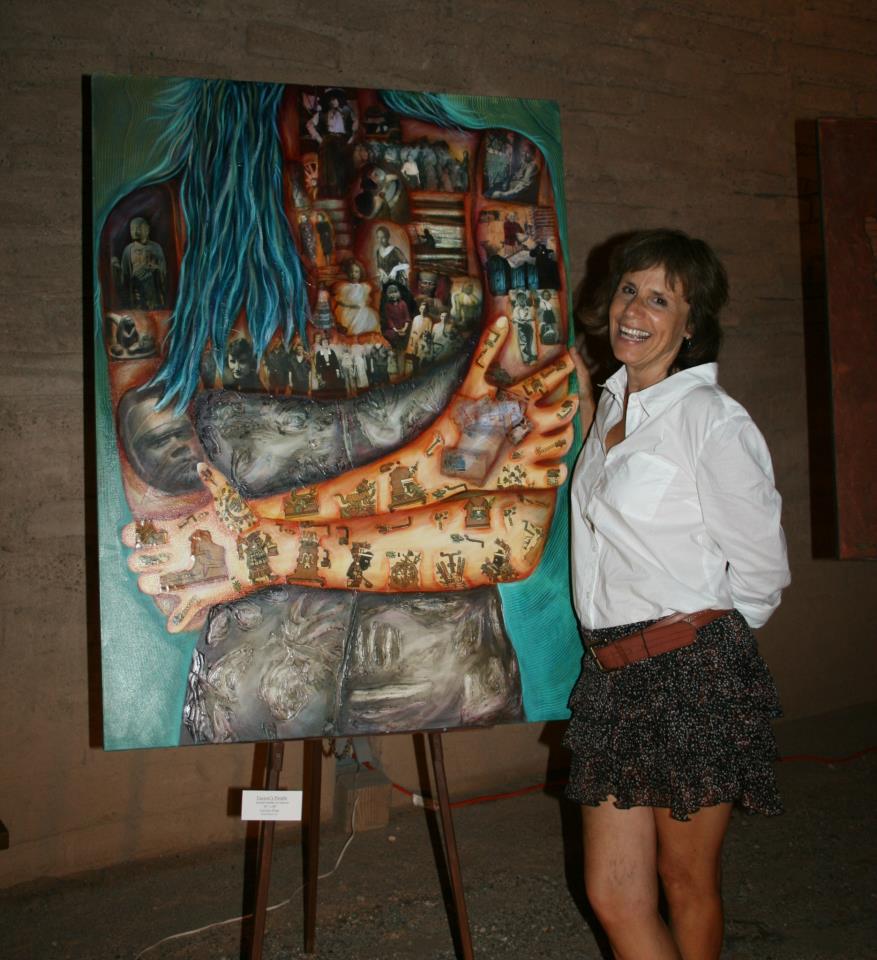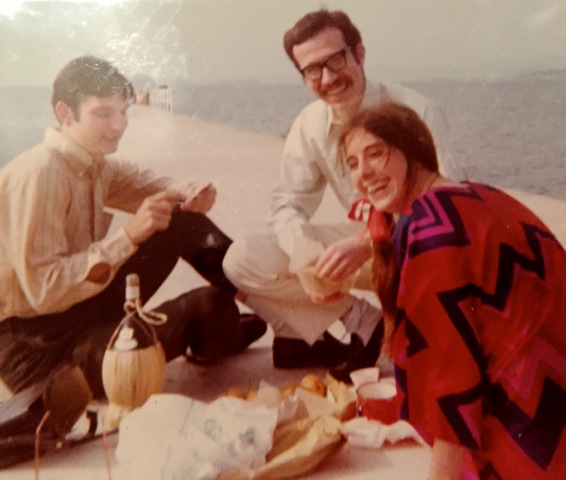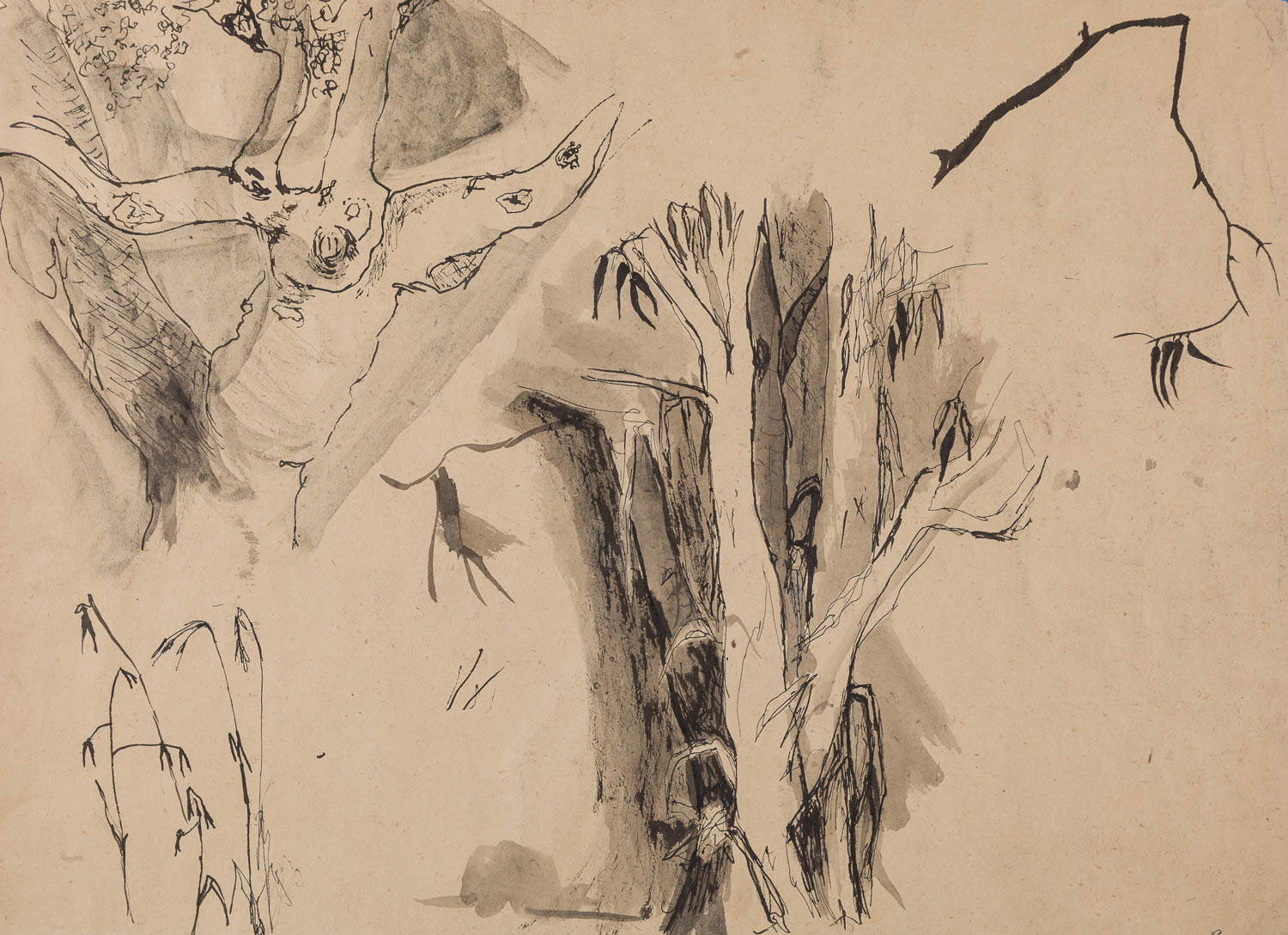An art teacher can make a huge impact on students in the best or worst ways. Their words can send students (young or old) on a life-long creative journey, or sear their minds with self-doubt.
Indeed, if you’ve had a negative experience, it can take years to realize that those who put limits on your artistic potential may not have actually known you, or were plain wrong about what they saw. Students routinely come to The Drawing Studio having not attempted anything artistic for decades because someone told them they were not “talented” or “creative.”
How liberating to realize that something you believed nearly your entire life is not true!
The good news is the best art teachers can inspire and pass along great wisdom. Read about three Tucson artists (also TDS instructors) who had wonderful mentors. They bring the benefit of their positive experiences to our classrooms today, and we couldn’t be more happy to share their stories with you.
Great art teachers surround us with art

Artist Carolyn King (pictured) says her mother was her first inspiration, filling their home with art from around the world.
Carolyn King‘s first great influence was her mother, who filled their home with art. They weren’t valuable works – some were gifts, or even items picked up second-hand. However, those objects served as the first models for the idea that there is an artist in everyone.
“I was surrounded by the energy of the hands of the world,” Carolyn said.
Carolyn went on to travel and study art in Europe and Mexico. There, in the “land of the hand,” she saw the work of makers and creators integrated into everyday life: “It’s like the power is going into the collective.”
In her mid-20s, Carolyn enrolled in the Art Institute of Chicago to complete her BFA. It felt “devastatingly cold and heartless” compared to her studies at a small art school in Mexico except for the opportunity to study with Christina Ramberg, a teaching artist who changed her life. An American painter associated with the Chicago Imagists, Ramberg gave Carolyn permission to pursue her artistic vision.
“I came to this woman’s class with a bit of skill,” Carolyn said, “but she really honed in on what I was interested in.”
Drawing on her background in sewing, and influences from Mexico, Carolyn was creating mysterious human figures draped in shawls: Ramberg “simply attuned to who I was and really saw what I was doing,” Carolyn continued. “Being recognized for who I was, and what was speaking through me, made all of the difference in the world.”
Great art teachers encourage risk

Pat Dolan, age 21, (pictured) says her inspirational art teacher Liliana Gramberg encouraged a trip to Italy to study figure drawing.
“I never would have followed through with being an artist, and I wouldn’t be teaching where I am today, if it hadn’t been for Liliana Gramberg,” said TDS master teaching artist Pat Dolan.
Gramberg was an Italian printmaker especially known for her abstract work. Pat, an undergraduate at Trinity Washington University, had just changed her major from political science to studio art when she found herself one of six students in Gramberg’s intaglio print workshop.
“She saw something in me that I didn’t know was there. She brought out the artist in me that I didn’t even see,” Pat continued. When Pat graduated, Gramberg encouraged her to learn to draw the figure: “It’s the basis of all drawing,” Gramberg said. “So why don’t you go to Italy?”
Pat moved to Florence in 1969. Daily, she would go to the Accademia di Belle Arti to practice drawing. On the way to her figure drawing sessions, she would visit the paintings and frescos in the chapels and monasteries.
They “became like my friends,” she said. “I was there for nine months and I could visit them whenever I wanted to.”
Gramberg encouraged Pat to pursue a master’s degree in studio art, rather than in social work. She supported her desire to take risks. “I wouldn’t say she gave me the confidence, because I had to create that for myself,” Pat said. “But she nurtured me so I could go on that path.”
Great art teachers teach discipline
“I took a drawing class taught by Robert Frame,” said Barbara Kemp Cowlin, recalling her beginnings as an art student in California in the early 1970s. “It really changed my life because all of a sudden I could see what it was all about.”
Frame was an American painter known for his colorful oil paintings of coastal landscapes and still lifes. He was also an adjunct instructor at Santa Barbara City College.

Artist Barbara Kemp Cowlin’s sketch of Santa Barbara eucalyptus trees. Her art teacher Robert Frame taught discipline and also inspired students.
“He set up these complex still lifes and he just knew how to guide you through the process,” Barbara said. “I can practically visualize his compositions. Objects were spread out on a low table, and at first they were more geometric shapes – cones and squares. The later ones were more like jumbles.”
Frame would send his students with paper and pen to capture the California vegetation and historic Santa Barbara homes with their gabled roofs.
His mantra was “let inspiration find you working,” a paraphrase of a Pablo Picasso quote. “Even today, that always echoes in my mind,” Barbara continued. “I know there are many, many times when I drag myself to the easel and those can be the best painting days for me.”
“He really taught me to discipline myself. You paint every day, whether you want to or not.”
Great art organizations say it’s never too late
One of the best things to come from writing this blog? The collective wisdom that I pass along to you reinforces my own practices and habits. Take what you like from these stories to inform your art making. Great teachers come to us in many ways, and over the course of our lives – and it is never too late to discover one.
– Stephanie Balzer, executive director
Get more content like this, plus stay up-to-date on TDS classes, by subscribing to our e-newsletter.


